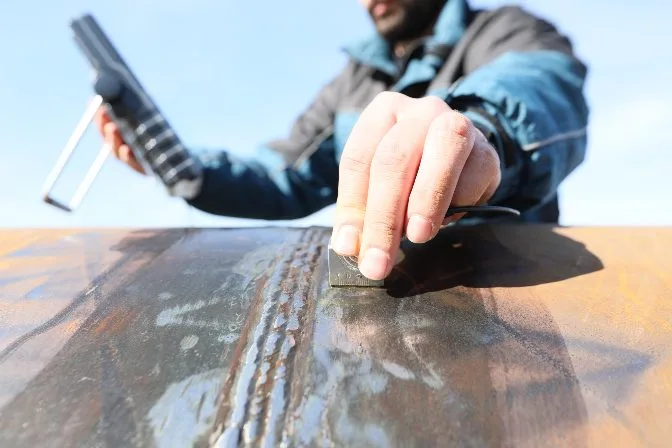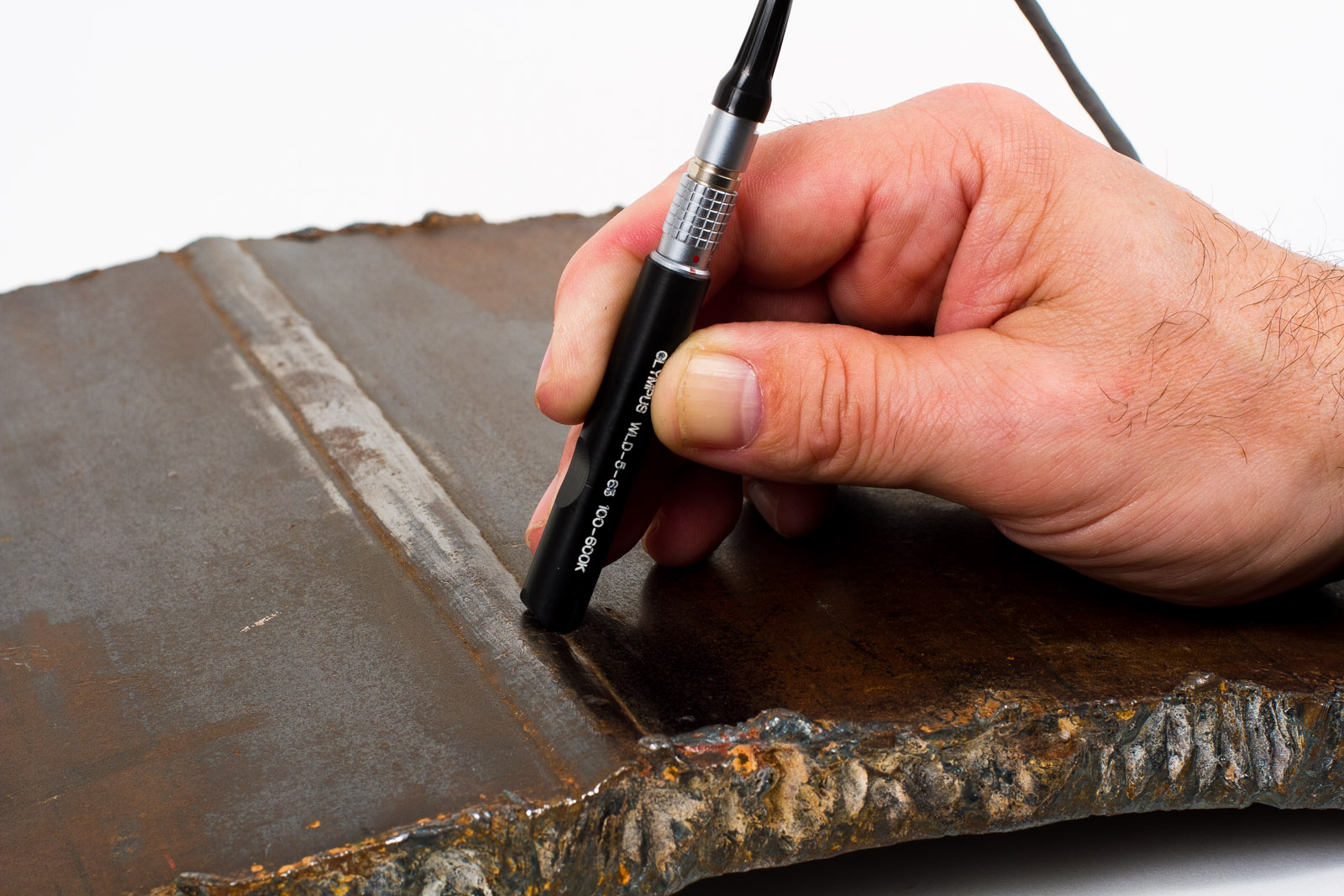Ensuring Safety with Trusted Welding Inspection Milwaukee Techniques
Ensuring Safety with Trusted Welding Inspection Milwaukee Techniques
Blog Article
Exactly How Welding Inspection Adds to Durability and Integrity in Manufacture Jobs
Welding inspection serves as a fundamental aspect in making sure the longevity and integrity of construction jobs. By methodically identifying potential flaws during numerous phases of manufacturing, welding examinations not only avoid expensive failings but likewise cultivate a society of high quality assurance within the team.

Significance of Welding Assessment
Making sure top quality via welding inspection is a vital component of any type of manufacture job. It offers as a secure to verify that welding processes meet recognized standards and specs, therefore boosting the total stability of the structure or part being fabricated. Welding examination is not just a procedural step; it is a necessary technique that assists recognize potential concerns early, making certain that they are resolved before they intensify right into considerable problems.
The importance of welding inspection can be underscored by its role in preserving safety and resilience. Welded joints are frequently subjected to severe problems, and any defects can endanger the performance and long life of the last product. By carrying out strenuous examination methods, companies can make certain conformity with industry laws, consequently reducing risks related to structural failures.
Moreover, efficient welding inspection promotes confidence amongst stakeholders, including customers and regulatory bodies, that the job satisfies the highest possible high quality criteria. This not only boosts the online reputation of the producer yet also adds to lasting cost financial savings by avoiding rework and prospective responsibilities. Eventually, welding inspection is important to the success and reliability of fabrication tasks, reinforcing the worth of quality control in design practices.
Common Welding Defects
Welding problems can substantially weaken the structural stability of fabricated components, making their recognition and correction vital. Usual welding problems can be broadly categorized right into 3 kinds: geometric, metallurgical, and service-related.
Geometric flaws include issues such as undercutting, where the base steel is worn down at the side of the weld, and extreme convexity, which can result in tension focus factors. These flaws can compromise the toughness and longevity of the weld joint.
Metallurgical issues arise from inappropriate welding treatments or products, resulting in issues such as porosity, where gas pockets form within the weld, and absence of combination, which occurs when the weld metal fails to bond effectively with the base steel. These issues can substantially damage the weld's efficiency.
Service-related defects might not emerge till after the element is in usage. Examples consist of breaking as a result of thermal anxiety or fatigue, which can cause devastating failures otherwise addressed.
Recognizing these typical defects encourages fabricators to apply effective inspection strategies that boost the reliability and durability of their tasks, eventually making sure security and performance standards are met.
Assessment Techniques and strategies
A thorough method to evaluation strategies and approaches is vital for alleviating and recognizing welding flaws in fabrication projects. Different approaches are employed to make sure the honesty of welds, consisting of aesthetic inspection, ultrasonic testing (UT), radiographic testing (RT), magnetic fragment testing (MT), and color penetrant testing (PT) Each strategy has its strengths and specific applications.

Magnetic particle testing is useful for discovering surface and near-surface flaws in ferromagnetic products. By using a magnetic field and making use of ferrous particles, assessors can identify gaps properly. Dye penetrant screening highlights surface-breaking defects with the application of a see post dye that seeps into splits, making them noticeable under ultraviolet light.
Using a combination of these techniques ensures a strenuous evaluation, boosting the reliability of welded structures.

Influence On Job Durability
Effective inspection methods dramatically affect the long life of construction projects. By identifying potential issues and incongruities in welding procedures, assessments make certain that frameworks are built to withstand functional tensions in time. When welds are thoroughly checked out, the probability of undiscovered issues, which can cause structural failings, is lessened.
Regular evaluations help with adherence to industry requirements and regulations, which are critical for making sure the toughness of welded joints. Such conformity not only boosts the integrity of the task however also guarantees stakeholders regarding the high quality of the work. Moreover, timely detection of flaws enables for restorative actions to be taken early, stopping costly repair services or full overhauls down the line.
Additionally, efficient examination methods cultivate a society of quality control within construction teams. They are much more likely to adhere to finest techniques and keep high criteria throughout the production process when employees Related Site are conscious that their job will certainly be carefully evaluated. Ultimately, this commitment to high quality not only extends the life expectancy of the job yet additionally lowers upkeep costs, thus improving the general economic practicality of fabrication ventures.
Enhancing Reliability in Fabrication
Integrity in construction is dramatically boosted with extensive evaluation procedures that address possible weak points in welding practices. Reliable welding examination not only identifies defects early yet likewise provides important feedback to welders, making sure adherence to established requirements and standards. By utilizing non-destructive screening methods, such as radiographic or ultrasonic assessments, producers can determine the honesty of welds without jeopardizing the material.
In addition, routine inspections cultivate a culture of top quality and accountability amongst fabrication groups. They are extra likely to stick to best techniques and procedures when welders comprehend that their work is subject to strict analyses. This proactive technique minimizes the danger of pricey failures during the functional stage of a project.
Eventually, improving dependability in fabrication through thorough evaluation refines not only enhances the life expectancy of the made components but additionally enhances stakeholder self-confidence in the job's overall high quality and longevity. Spending in durable welding evaluation techniques is crucial for attaining long-lasting reliability in any fabrication undertaking.
Verdict
In recap, welding evaluation functions as an important component in ensuring the long life and dependability of fabrication tasks. By determining problems early and employing non-destructive screening methods, inspections foster a society of high quality guarantee that follows industry criteria. The methodical documentation of outcomes not only promotes pattern analysis yet likewise boosts responsibility and architectural stability. Eventually, reliable welding assessment practices strengthen stakeholder self-confidence and substantially add to the financial viability of manufacture endeavors.
Welding assessment offers as a fundamental element in guaranteeing the long life and reliability of construction jobs.Making certain quality through welding assessment is a crucial element of any type of manufacture task. Inevitably, welding evaluation is important to the success and integrity of manufacture tasks, enhancing the value of top quality guarantee in design techniques.
A thorough strategy to examination techniques and methods is important for reducing and identifying welding problems in manufacture projects.In summary, welding assessment offers as a crucial part in ensuring visit the website the long life and dependability of manufacture tasks.
Report this page